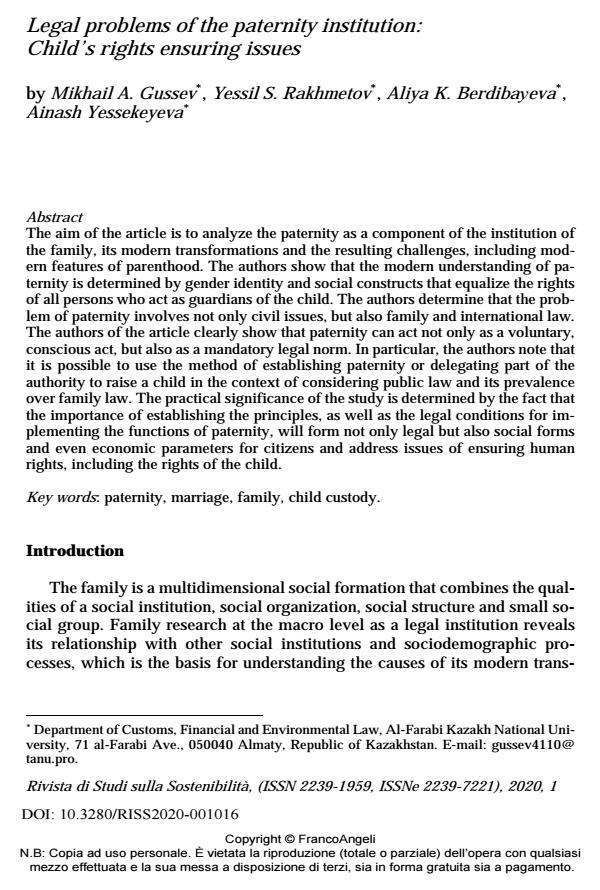Legal problems of the paternity institution: Child’s rights ensuring issues
Journal title RIVISTA DI STUDI SULLA SOSTENIBILITA'
Author/s Mikhail A. Gussev, Yessil S. Rakhmetov, Aliya K. Berdibayeva, Ainash Yessekeyeva
Publishing Year 2020 Issue 2020/1
Language English Pages 20 P. 267-286 File size 131 KB
DOI 10.3280/RISS2020-001016
DOI is like a bar code for intellectual property: to have more infomation
click here
Below, you can see the article first page
If you want to buy this article in PDF format, you can do it, following the instructions to buy download credits

FrancoAngeli is member of Publishers International Linking Association, Inc (PILA), a not-for-profit association which run the CrossRef service enabling links to and from online scholarly content.
The aim of the article is to analyze the paternity as a component of the institution of the family, its modern transformations and the resulting challenges, including modern features of parenthood. The authors show that the modern understanding of paternity is determined by gender identity and social constructs that equalize the rights of all persons who act as guardians of the child. The authors determine that the problem of paternity involves not only civil issues, but also family and in-ternational law. The authors of the article clearly show that paternity can act not only as a voluntary, conscious act, but also as a mandatory legal norm. In particu-lar, the authors note that it is possible to use the method of establishing paternity or delegating part of the authority to raise a child in the context of considering public law and its prevalence over family law. The practical significance of the study is determined by the fact that the importance of establishing the principles, as well as the legal conditions for implementing the functions of paternity, will form not only legal but also social forms and even economic parameters for citi-zens and address issues of ensuring human rights, including the rights of the child.
Keywords: Paternity, marriage, family, child custody.
Mikhail A. Gussev, Yessil S. Rakhmetov, Aliya K. Berdibayeva, Ainash Yessekeyeva, Legal problems of the paternity institution: Child’s rights ensuring issues in "RIVISTA DI STUDI SULLA SOSTENIBILITA'" 1/2020, pp 267-286, DOI: 10.3280/RISS2020-001016